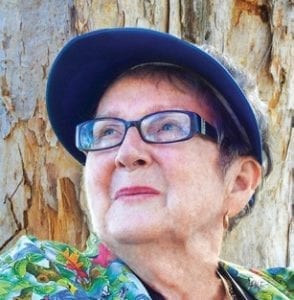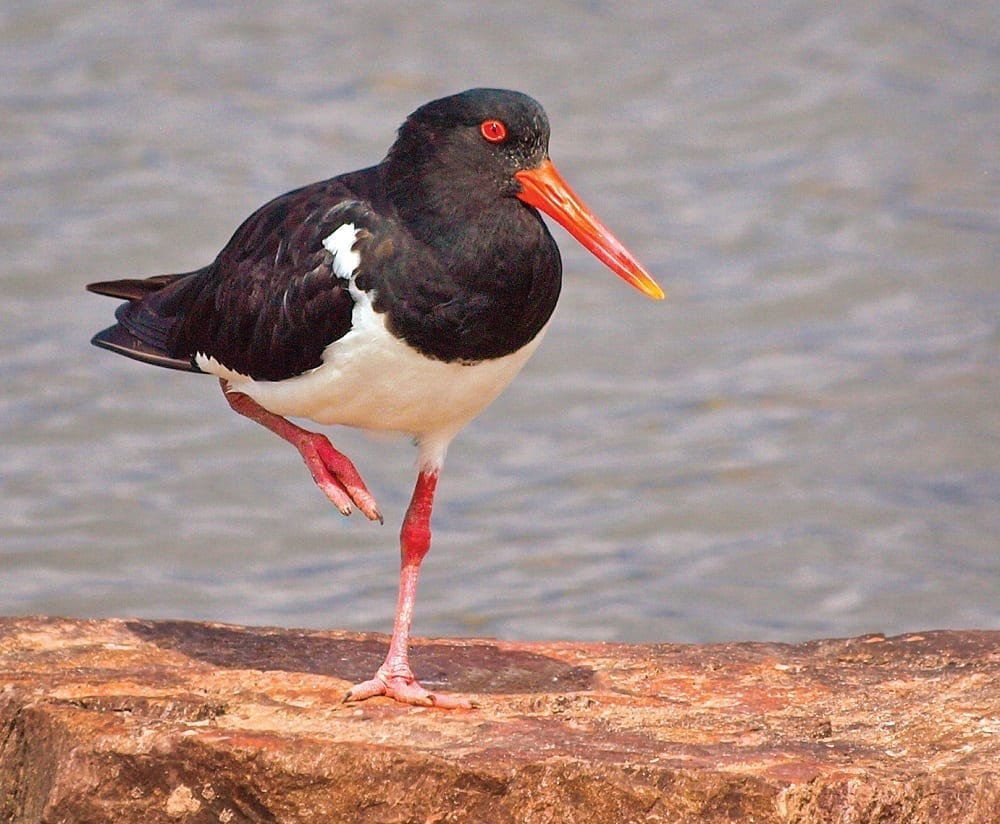Tags: Wildlife. Australian. Birds. Queensland. Animals

By Marj Webber
Handsome black and white waders with bright red eyes, red bills and legs are commonly seen walking, feeding alone, in pairs or in small groups along the sandy beaches of Bribie Island and the Pumicestone Passage.
They are 42-51 cm in length and weigh between 400 and 780g. Their strong red bills are used to prize open molluscs, dig in the sand for worms and to catch insects. Young Oystercatchers have to be taught by their parents to open shells and obtain their food. Australian Pied Oystercatchers are beach-nesting birds and breed usually between August and January along our shores and beaches all around Australia.
Pairs remain together for many years but will change partners. Nests are mere scrapes in the sand just above the high tide mark. Female Oystercatchers incubate the 2-3 brownish speckled eggs which hatch in about 28-32 days. The young, when hatched, are tiny, brown, striped chicks which leave the nest within a few days. Adult oystercatchers will defend their nests by pretending to be injured and luring the predator from the eggs or chicks.

Managing with one foot.
They will sometimes dive bomb from the air. During the 42-48 days before the chicks can fly they face many perils. To protect themselves when danger threatens they will often hide in grass or foliage on the beach until it becomes safe again. As the nests are out in the open on sandy beaches they are very vulnerable to predators such as raptors, off-leash dogs and cats. Nests are very hard to spot and it is easy to step on them while walking on the beach.
If the parents become too disturbed they will often abandon the nests with the loss of eggs or babies. People using the beach on horses and in 4WD vehicles are a huge threat to beach-nesting birds. There are five species of beach-nesting birds in Australia four of which are found on Bribie Island.
Pied Oystercatchers, Beach Stone-curlews, and Red-capped Plovers breed on our beaches while Sooty Oystercatchers are not common but can sometimes be seen from the roost at Banksia Beach or on the beach near Buckley’s Hole. Beach-nesting birds have a very poor breeding success because of the popularity of our beaches. In Victoria, Birds Australia has a programme in place to save the Hooded Plover which is a beach-nester and an endangered species but not found on Bribie Island.

Small group
Australian Pied Oystercatchers are not migratory waders but are locally nomadic. They are territorial and claim a strip of beach of about 200 m and will move if need be. Their call is high pitched and sounds a little like a squeaky toy. I sometimes hear them calling as they fly over during the night. Conservation status – federally secure but vulnerable in NSW.
Other Articles
https://thebribieislander.com.au/the-wildlife-of-bribie-island/
